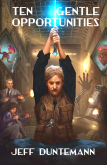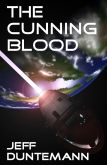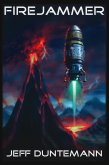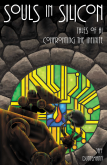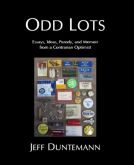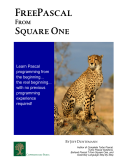The last ice age might have killed us all. All of us, then and now and for all time. It might have been the end of all multicellular life on Earth. We came close. Way close. I’ve always been surprised that almost no one else talks about this. (I’m reading a book that talks about it—a little. I’ll review it as time permits.)
I’ve been planning to write about this for at least five years, when the idea first occurred to me. I didn’t because almost nothing gets Certain People more screamingly upset than challenging any least part of the Climate Catastrophe narrative. If reading this makes you furious, please go somewhere else. I’ve decided that it’s about time to bring it up.
The bullet we dodged during the last ice age was the level of carbon dioxide in our atmosphere. As you may know from high school chemistry, cold water absorbs more gas than warmer water. Cool the oceans down, and the oceans will suck up a lot of atmospheric gas, including carbon dioxide. And what do ice ages do? They cool the planet, including the oceans. A lot.
At the depth of the last ice age, atmospheric CO2 went down to 180 parts per million. We know that at about 150 ppm CO2, photosynthesis just stops. Plants die, and in a plant-based ecology like the one we live in, so does almost everything else.
The missing CO2 was dissolved in the oceans, and as the oceans warmed, the CO2 returned to the atmosphere. This is pretty simple stuff. But there’s a problem: CO2 is also being removed from the atmosphere, constantly and permanently. This happens in a number of ways, but a lot of it goes into the carbonate shells of ocean plankton and other carbonate-shelled species. The organisms die (as everything dies eventually) and their shells sink to the sea bottom and stay there.
What this means is that every time we get an ice age, there’s less CO2 in the air to begin with, and therefore less CO2 in the air once it dissolves in the colder oceans. If a future ice age takes that atmospheric CO2 concentration down lower than 150 ppm, it’s all over for life on Earth. I call this the Ratchet of Doom.
But…but…we fixed that, right? Yes, we did. But if homo sapiens hadn’t evolved an industrial civilization, the next ice age could well have destroyed the ecosphere.
There’s a well-known graph of atmospheric CO2 concentration over the last 500 million years. It’s interesting, as it graphs CO2 concentration against temperature. Take a look:

This is usually used to demonstrate that CO2 levels are not closely related to global temperatures. But it also demonstrates that we are living in an age where the CO2 levels in the atmosphere are about as low as they’ve ever been. The little uptick at the end of the purple line is us, now. We’re up a little, sure. But compared to earlier geological history, not by much.
There’s another graph that highlights the effects of the ice ages on CO2 levels. I have some quibbles with the scale of the concentration line, but if you look closely, you’ll see that each ice age’s peak brings the CO2 line down a little lower. That’s what gave me the idea: That a planet’s ecology brings CO2 levels down gradually but inexorably. At some point those levels cease to be able to support photosynthetic life.

Obviously, we are no longer in this particular danger. We’ve released some of the carbon that was laid down during the aptly named Carboniferous age. My point is that it was a pretty narrow escape, which got narrower with every passing ice age.
I’ve often wondered (and this is mere speculation that can’t be proven) if the Little Ice Age was actually the infancy of a Big Ice Age, which we aborted by burning coal, oil, and methane in quantity. The upturn of temperatures is weirdly coincident with the time period when the Industrial Revolution rose to full roar.
It’s possible to argue that more CO2 is beneficial in terms of crop yields and even good weather, or at very least not dangerous. Again, I’m reading a book that makes all those points in detail far better than I ever could, and I’ll review it when I can.
The Ratchet of Doom is no longer ticking. Let all of us who believe in the future—even the distant future–at least be glad of that.





